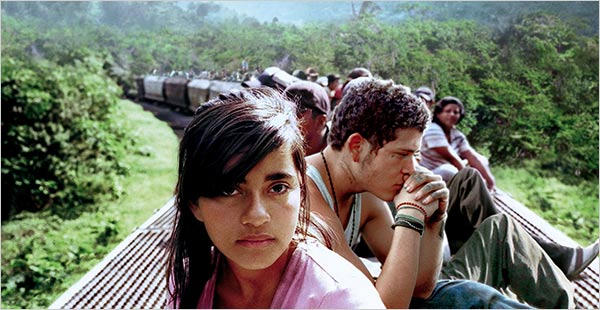
The uproar surrounding the detention of children at the Mexican-US border has brought attention to the migration of Central Americans to the US.
The majority are from what is called the Northern Triangle – Honduras, El Salvador, and Guatemala – and are seeking asylum because of increased violence in their home nations. Many of these take a long, dangerous, and harrowing journey through Mexico, which is also tasked to police their transit through agreements with the US.
On arrival, they have the right under international law to request asylum in the US. This issue came to the public attention in the US when, in April 2018 for safety reasons 150-200 Central Americans travelled as a group through Mexico to get to the US border to petition for asylum.
Whilst many of these cases are being muddled with anti-immigration rhetoric by the current US government, there are complex historic and geo-political reasons for this current movement of people across borders.
Many of these reasons go back to US interventionist policies during the Cold War and have been aggravated by the increased militarization of the US-Mexico border since the Clinton presidency.
It’s important for us to look back at the events of the past that have lead up to this point, so that we have the full context when looking at today’s headlines.
Find out more
To get some further insight into the causes of the movement of so many, here are some recommendations for reading, listening and viewing:
- In Tell Me How it Ends: An Essay in Forty Questions (2017) the New York based Mexican writer Valeria Luiselli writes of her experiences navigating the bureaucracy of the immigration system as a privileged, bilingual individual and sets it alongside stories of children and young people she encountered whilst volunteering for a translation service helping undocumented Central American children facing deportation. It is a short and moving reflection and analysis of the experience.
- Part of the National Public Radio (NPR) stable, Latino USA regularly addresses issues related to migration, as well as other features including portraits of well-known Latinos, such as Luis Fonsi and Alaska. A May 31 2018 episode took a look at how the US immigration system lost track of about 1,500 minors, which gives a sense of the possible fate of the children whose parents are not able to accompany them.
- Three of the many recent films that specifically consider the reasons, experiences, and consequences of movement across borders are: Sin nombre (Cary Joji Fukunaga, 2009), La jaula de oro/The Golden Dream (Diego Quemada-Díez, 2013), and Who is Dayani Crystal? (Mark Silver, 2014). Sin nombre and The Golden Dream are about teens fleeing poverty and gangs in their country of origin and make the perilous journey through Mexico. Part of their journey is on top of the infamous and very dangerous ‘La Bestia’ (the beast) freight trains that traverse Mexico. Who is Dayani Crystal? is a documentary featuring Gael García Bernal that is an investigation into the identity of a dead migrant discovered in the Arizona desert whose tattoo “Dayani Crystal” serves as the only clue to his identity.
These are only a starting point, given the complexity and historical reach of this issue.
*This blog was cross-posted on the University of Liverpool Modern Languages and Cultures site.